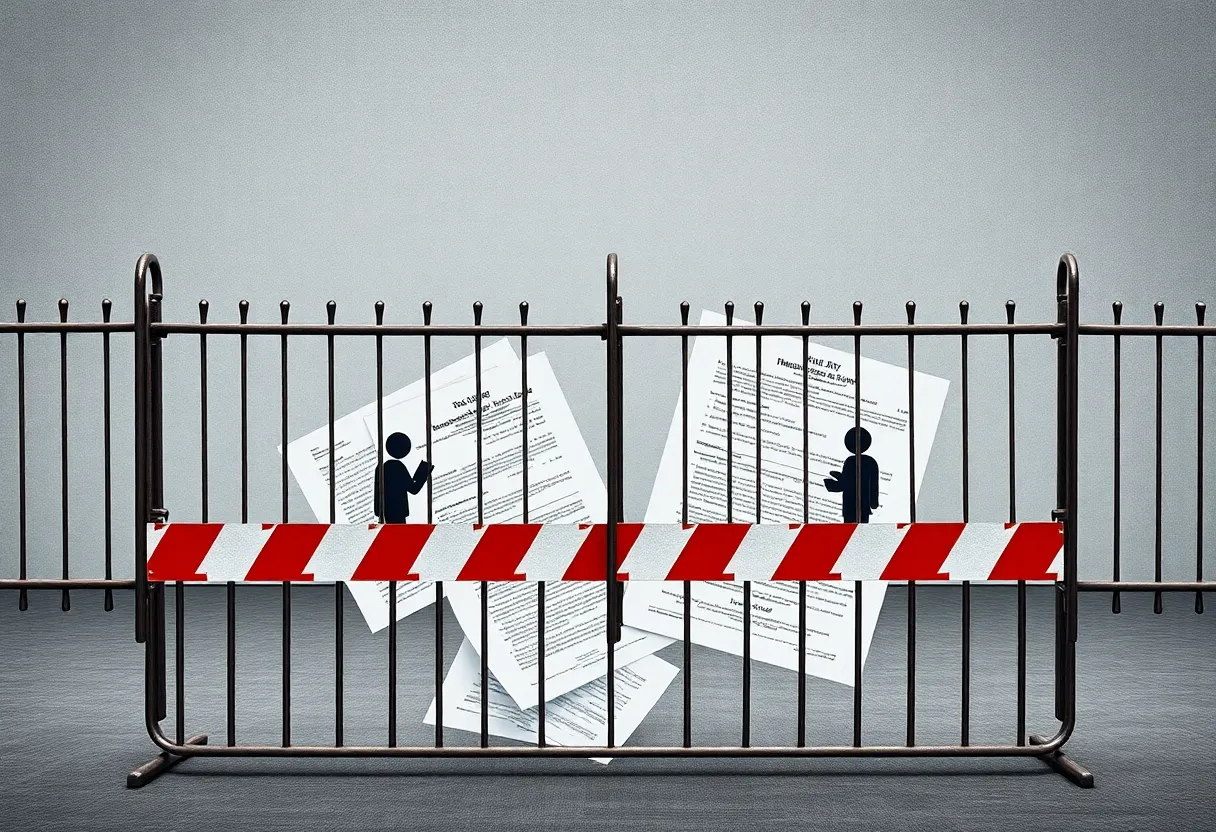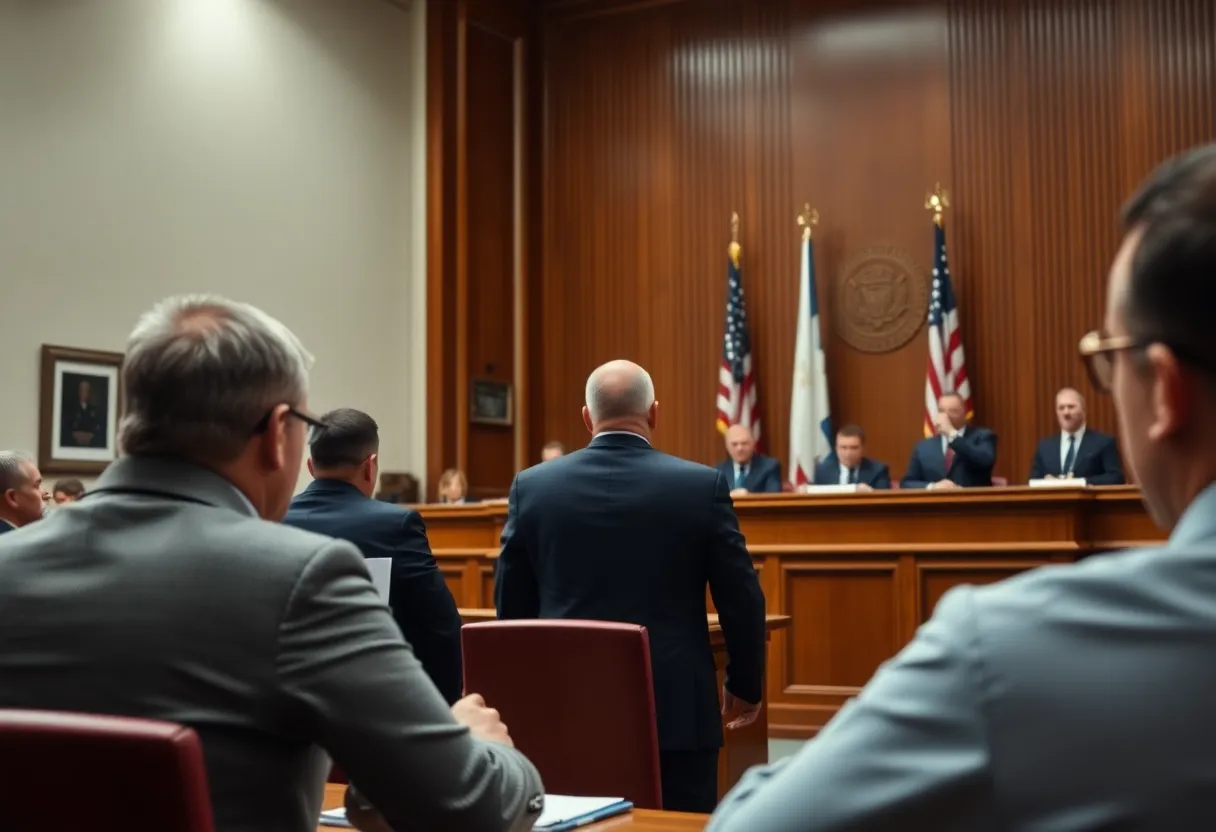News Summary
President Trump has signed a directive aimed at cutting federal benefits for undocumented immigrants, with the intention of stopping taxpayer dollars from funding assistance to those residing in the U.S. illegally. This move revisits prior welfare reforms and could lead to significant changes in benefit eligibility, particularly affecting immigrants using the parole system. The order has ignited debate and pushback from various sectors of the American public, especially given the existing strain on immigration courts.
Trump’s New Order: Aiming to Cut Federal Benefits for Undocumented Immigrants
In a bold move, President Trump has put pen to paper, signing a directive that could significantly change the landscape for undocumented immigrants in the country. The crux of the order? It seeks to terminate all federal benefits for individuals residing in the United States illegally. The White House has made it clear that the goal is to stop using taxpayer dollars to fund benefits for these individuals, though the specific benefits that would be affected remain a bit murky.
What’s the Background?
Generally speaking, people who find themselves in the U.S. without proper documentation already don’t qualify for many federal benefits. The exceptions are quite limited, with emergency medical care being one of the few areas where help is provided. There’s also a legal precedent set back in 1982 by the Supreme Court regarding education: every child, regardless of immigration status, has the right to free K-12 schooling. This ensures that children don’t miss out on basic education, which everyone can agree is a cornerstone for future opportunities.
Looking Back at Past Policies
Trump’s order revisits a welfare reform from 1996 aimed at limiting public benefits for undocumented individuals. The order asserts that previous administrations have gradually chipped away at this important law. In Trump’s eyes, there’s been a misuse of taxpayer resources, especially under Biden’s leadership, which has seen a flurry of immigration policies that allow for the temporary admission of individuals.
Examining the Current Parole System
Speaking of temporary admissions, Trump’s order takes a close look at how many people have entered the country using a system called parole. Over 900,000 have come in through the use of an appointment app known as CBP One, while another 500,000 individuals from Cuba, Haiti, Nicaragua, and Venezuela have entered with sponsors. Trump’s decision also blocks Biden’s initiatives that allowed parole for nearly 300,000 individuals from Ukraine and Afghanistan, indicating a stark shift in immigration philosophy. The directive highlights that once parolees have been in the U.S. for a year, they can gain a new status as “qualified non-citizens,” making them eligible for certain benefits like Medicaid after five years.
What Does This Mean Going Forward?
The order instructs various federal departments to identify what benefit expenditures may be inconsistent with the 1996 welfare law. This could mean that if state or local governments have policies (often referred to as “sanctuary” policies) that foster illegal immigration, they might have to rethink their funding sources. The overarching goal seems to be a crackdown on any practices that could encourage undocumented individuals to settle in the U.S.
Public Responses and Concerns
While Trump’s administration pushes forward with this tough stance, it’s not without pushback. Recent polling indicates that a significant portion of Americans are not on board with many of these immigration policies. The support is clearly skewed along party lines, with Republicans appearing to back the initiatives more robustly compared to their Democratic and Independent counterparts.
Challenges Ahead for Immigration Courts
A big concern surrounding Trump’s orders involves the immigration court system, which is already bursting at the seams with over 3.7 million pending cases. With recent reports of immigration judges being let go, there are fears that this could exacerbate the backlog. The Justice Department had previously aimed at speeding up case resolutions but has met with resistance from advocacy groups, highlighting the complexities of the ongoing debate around immigration enforcement.
The Bottom Line
As Trump’s administration continues to forge a path focused on stricter immigration measures, the implications of these changes are yet to unfold fully. With a mixture of policy shifts, public sentiment, and significant legal implications at play, it seems this conversation about immigration is far from over. Wherever you stand on the issue, it’s certainly a topic that continues to stir emotions and spark debate across the country.
Deeper Dive: News & Info About This Topic
- AP News: Trump’s New Order on Federal Benefits for Undocumented Immigrants
- BBC News: Live Updates on Immigration Policies
- Miami Herald: Impact of Trump’s Immigration Directive
- Immigration Impact: The Chilling Effect of Trump’s Immigration Actions
- VOA News: Restructuring of Immigration Courts Under Trump’s Orders
- Wikipedia: Immigration in the United States







